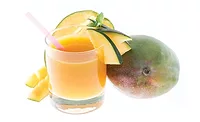Plant-based, clean-label trends drive nut, grain usage
Nuts and grains proliferate across beverage categories

Plant-based eating habits are becoming more than a trend in the U.S. market. According to a June 2017 article from the Institute of Food Technologists titled “Plant-based diets are taking root,” plant-based eating has become a revolution. In fact, 55 percent of consumers who have moved to a plant-based diet said they’re committed to making it a permanent change, the article reports.
In line with this, the overarching health-and-wellness trend is driving consumers to look for natural, plant-based products, says Kantha Shelke, principal at Corvus Blue LLC, a Chicago-based food science and research firm.
“Mindfulness has made consumers more concerned about naturalness and minimal processing techniques. Formulators are therefore seeking ingredients derived from wholesome foods, such as walnuts, instead of synthetic ingredients to texturize, thicken and stabilize beverages,” she explains. “The growing awareness of the effect of food choices on one’s health is driving the preferential demand for plant-based options.”
The beverage industry has been quick on its feet to accommodate the growing consumer demand for plant-based products and some manufacturers have turned to nuts and grains to do so. This trend is most notable in the dairy-alternative category, where nut-based milks have proliferated, experts note.
Harbinder Mann, associate director of Trade Marketing and Stewardship for the Almond Board of California, Modesto, Calif., highlights the success of almond milk. Almond milk attracts consumers who are looking to reduce their consumption of animal products, soy, saturated fat, cholesterol, calories and sugar, he says.
“By incorporating almonds in dairy beverages or switching to almond milk, consumers can easily increase their consumption of plant-based foods, which are seen as an important component of a clean and healthy diet,” he adds.
Yet, nut milks aren’t the only beverage category embracing the benefits of nuts and grains, experts say.
“Nuts and grains are being used in more than just dairy alternatives. Smoothies and juice-based drinks are incorporating grains and nuts or nut butters to add fiber, protein or whole grain claims,” explains Alison Raban, certified food scientist at Rancho Dominguez, Calif.-based BI Nutraceuticals. “Finally, it may be overlooked, but craft brewed beer is another huge category that uses unique and sometimes unusual grains and nuts, again providing consumers new and exciting options.”
Ilana Orlofsky, marketing manager at Niles, Ill.-based Imbibe, also notes that nuts and grains are proliferating across a variety of beverage categories.
“Cold-pressed juices, plant-based milks and smoothies are the most common categories that continue to experiment with grains and nuts,” she says. “Launches of plant-based coffee lattes are hitting the market at a higher frequency, and nuts are also being used in those formulations.”
Drinkable snack innovation also could be supported by nut and grain experimentation, she adds.
The California Walnut Commission, Folsom, Calif., highlights that walnuts have found a place in alcohol as well. The nut is used to garnish cocktails and infuse spirits, liqueurs, syrups, tinctures, butters and bitters, it says.
Among the grains proliferating in beverage formulations are oats, rice, quinoa and chai, says Jessica Kidwell, senior director of Product Development and Applications at Archer Daniels Midland (ADM), Chicago. Popular nut ingredients include peanuts, almonds, cashews and macadamia nuts, she adds.
Beyond clean labels and plant-based claims, consumers are looking for nutritional supplementation, which nuts and grains are known to provide, Kidwell says.
“Consumers’ perceptions of the market continue to evolve, and they are more and more educated on what is being put into their food and beverages,” she explains. “Millennials want protein, fiber and whole grains in their diets and are expecting more clean and clear labels. This means that companies are removing ingredients that consumers perceive as being unhealthy and ensuring a short list of recognizable and simple ingredients to deliver both clean and clear labels to consumers. By utilizing grains and nuts, you get better nutrition while incorporating ingredients that consumers can easily recognize.”
The value-added claims that nuts and grains offer are expansive, experts note.
“Right now, anything plant-based will stir consumer interest, so grains and nuts have influenced the increased use while also providing nutritional benefits,” BI’s Raban says. “Depending on the type of ingredient and usage level, nuts, grains and seeds add protein, fiber, whole grain or even omega-3, like in the case of chia seeds.”
Highlighting these nutritional benefits, the California Walnut Commission notes that walnuts are a source of plant-based omega-3, alpha-linolenic acid. They also contain protein, fiber and magnesium, it says.
Protein is one of the main nutrients enticing beverage-makers to turn to nuts and grains.
“Formulators are reaching out for milks, purees and proteins derived from walnuts and [the nuts] are being used along with other plant-based protein sources … to boost not only the consistency of these liquid foods, but to also boost their nutrition label with the added protein,” Corvus Blue's Shelke says. BI
Looking for a reprint of this article?
From high-res PDFs to custom plaques, order your copy today!








